U.S. President Joe Biden is set to host a virtual summit this week for leaders from government, civil society, and the private sector to discuss the renewal of democracy. We can expect to see plenty of worthy yet predictable issues discussed: the threat of foreign agents interfering in elections, online disinformation, political polarization, and the temptation of populist and authoritarian alternatives. For the United States specifically, the role of money in politics, partisan gerrymandering, endless gridlock in Congress, and the recent voter suppression efforts targeting Black communities in the South should certainly be on the agenda.
All are important and relevant topics. Something more fundamental, however, is needed. The clear erosion of our political institutions is just the latest evidence, if any more was needed, that it’s past time to discuss what democracy means—and why we should care about it. We have to question, moreover, whether the political systems we have are even worth restoring or if we should more substantively alter them, including through profound constitutional reforms.
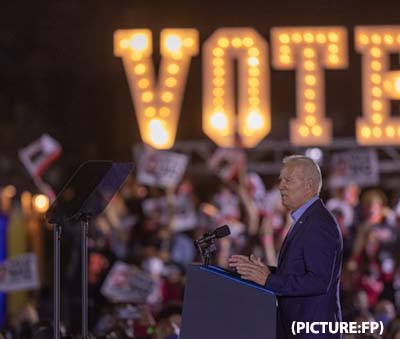 Such a discussion has never been more vital. The systems in place today once represented a clear improvement on prior regimes—monarchies, theocracies, and other tyrannies—but it may be a mistake to call them adherents of democracy at all. The word roughly translates from its original Greek as “people’s power.” But the people writ large doesn’t hold power in these systems. Elites do. Consider that in the United States, according to a 2014 study by the political scientist’ Martin Gilens and Benjamin Page, only the richest 10 percent of the population seems to have any causal effect on public policy. The other 90 percent, they argue, is left with “democracy by coincidence”—getting what they want only when they happen to want the same thing as the people calling the shots.
Such a discussion has never been more vital. The systems in place today once represented a clear improvement on prior regimes—monarchies, theocracies, and other tyrannies—but it may be a mistake to call them adherents of democracy at all. The word roughly translates from its original Greek as “people’s power.” But the people writ large doesn’t hold power in these systems. Elites do. Consider that in the United States, according to a 2014 study by the political scientist’ Martin Gilens and Benjamin Page, only the richest 10 percent of the population seems to have any causal effect on public policy. The other 90 percent, they argue, is left with “democracy by coincidence”—getting what they want only when they happen to want the same thing as the people calling the shots.
This discrepancy between reality—democracy by coincidence—and the ideal of people’s power are baked in as a result of fundamental design flaws dating back to the 18th century. The only way to rectify those mistakes is to rework the design—to fully reimagine what it means to be democratic. Tinkering at the edges won’t do.
The best starting place to rectify such flaws is to better understand how they came about. Representative government, the ancestor of modern democracies, was born in the 18th century as a classical liberal-republican construct rather than a democratic one, primarily focused on the protection of certain individual rights rather than the empowerment of the broader citizenry. The goal was to give the people some say in choosing their rulers without allowing for actual popular rule. In other words, representative government historically favored the idea of people’s consent to power over that of people’s exercise of power.
The Founding Fathers of the United States, for example, famously wanted to create a republic rather than a democracy, which they associated with mob rule. James Madison, in particular, feared the tyranny of the majority as much as he disliked and rejected the old monarchical orders. He wanted to create a mixed regime with aristocratic and popular features whose main goal would be to protect individuals as much from powerful minorities as oppressive majorities. Alexander Hamilton even defended the ideal of a government that would include a president elected for life.
The federalist founders were thus explicit in their intent to create a republic that would not rest on demos Kratos, or “people’s power,” but instead on the power of elected elites, restrained by a complex system of checks and balances. They aimed to staff representative assemblies with a natural aristocracy of talent and wisdom capable of enlarging and refining the views of common people. In this way, the system would serve as a filter, maximizing the individual competence of representatives while accepting the costs of reducing that group to a sociologically and economically homogeneous group.
The next historical step in the evolution of representative government was to go from parliamentary democracy—where the legislative assembly was seen as a place of deliberation among individually superior minds—to party democracy. Elections became a competition among policy platforms in which individual citizens or their representatives could exercise their vote.
In the process, we moved from the Madisonian view of electoral representation as a proxy for public sentiment to something quite different. Party competition was seen by some as an effective system to ensure the periodic removal of the worst political leaders or, in an even more optimistic view, as a rational battle of ideas among partisan platforms.
The move to this form of the political regime was accompanied—and buttressed—by the flattening out of social distinctions and what the French historian Alexis de Tocqueville saw as an irresistible equalization of conditions. It was during this process that we started to call modern societies and by extension their governments, democracies. This began around 1830 in the United States and France and 1870 in the United Kingdom, despite the remarkable fact that women and minorities did not get the right to vote until much later. But while there was some real but limited progress toward sociopolitical equality, actual decision-making power—over anything from economic to foreign policy—remained in the hands of the elites.
Not only is this unequal distribution and indeed concentration of power hardly compatible with the idea of democracy, but it also makes the system vulnerable to systematic failures of governance. One of the main advantages of democracy, according to thinkers from Aristotle to W.E.B. Du Bois, is its capacity, when properly institutionalized, to tap into the distributed collective wisdom of its entire public. Along these lines, Aristotle thought that two heads were better than one. More poetically, Du Bois argued that “in the people, we have the source of that endless life and unbounded wisdom which the rulers of men must-have.”
Yet by design, representative democracies only sample the wisdom of a narrow subset of the population, namely the one that wins elections. Such a subset has globally skewed male, wealthy, educated, and of the locally dominant ethnicity. One might also add the following traits: charismatic, articulate, tall, and extroverted. It is not clear that any of these qualities—undeniably useful to win electoral campaigns—have any bearing on the capabilities of our ruling class to legislate well. This is especially problematic if, as some social scientists argue, the collective competence of a group is only partially a function of individual qualities and more so a function of the group’s diversity. Parliaments as we staff them might well be too homogenous for good lawmaking. Meanwhile, the rest of the population—including the introverted, inarticulate, short, and shy, as well as, typically, poor and Black or other people of color—is left to opine, at best, from a distance, if they don’t retreat from the system altogether.
While there is some wisdom to be gained from the aggregation of popular judgment in elections, pure electoral democracy misses out on all that can be gained from the diversity of knowledge and insight among the broader population. The key is to involve that broader group of people in a more deliberative and participatory way. Leaving them out creates massive blind spots, simmering resentment, and a systematic failure to address the needs and preferences of a portion, sometimes even a majority, of the population.
Examples of such failures abound, from the plight of the suburban working class in most advanced industrial societies, which is vastly underrepresented in all Western parliaments, to that of Black Americans, who are also still underrepresented in the U.S. Congress.
Such areas of underrepresentation might explain political events that surprised our pundit class: U.S. President Donald Trump’s electoral victory, the Brexit vote in the United Kingdom, and the yellow vest rebellion against a tax on gas in France. The example of the yellow vests, or gilets jaunes, offers a textbook case of the inability of electoral institutions to respond to the interests and concerns of a significant portion of the population that feels invisible—hence, the neon yellow jackets—and has in some cases given up on voting altogether.
These democratic flaws at the heart of representative democracy are sufficiently serious to account for at least some of its current institutional crisis, which may be better described as a chronic illness due to a congenital defect. Perhaps other factors, such as globalization, unfettered capitalism, and rapid technological change, as well as the economic inequalities they entail, made things worse in some countries. But make no mistake: Each of these vulnerabilities is part of the initial design.
Some may see this essay as a call for revolution. It is not. We have inherited the legacies of the 18th century, both institutional and ideological, and we should figure out how to make do with them, at least in part and for the time being. Yet having a clearer idea of what an authentic democracy should look like can usefully guide institutional reform in more radical directions—ones that are compatible with current power structures and prevailing ways of thinking.
Wherever possible, we should build new models of democratic decision-making so they can nudge the old ones aside as those become obsolete. That, I believe, is our best hope for renewing democracy.
There are many proposals for what a true democracy should look like, and they are all worth debating. My view defended in my book Open Democracy, is that an authentic democracy would center on ordinary citizens rather than elected politicians. One way forward, therefore, is to break with the dogma of electoral representation as the only—let alone the most democratic—a form of representation.
If democracy is truly ruled by the people, then all of us should be able to represent and be represented in turn—that is, have an equal chance to engage in lawmaking and policymaking on behalf of the rest of the group. The ruling, in other words, should not be a job reserved for those who can win elections. It should be accessible to all.
The open democracy I envisage would center on a House of the People selected by a randomized civic lottery—a large-scale jury, if you will—in which ordinary citizens have a chance to participate as democratic representatives with legislative prerogatives of their own (for example, on climate change and other long-term issues that remain largely unaddressed by our current political systems). Such a body could replace—or at the very least complement—existing elected chambers. This House of the People would be a forum for nonpartisan, informed, and transparent deliberation.
Furthermore, such a body should be open to the input of the larger public, including through mechanisms that enable individuals to put issues on its agenda or trigger a referendum on its proposals or even convene a citizens’ assembly—a large body of randomly selected citizens gathered to deliberate about a specific issue.
Critics of this idea might argue that putting ordinary citizens at the center of our democratic process naively assumes that politics is an amateurs’ sport. To some extent, that is correct because having a say about the common good and defining the law that governs all of us should be open to all, regardless of class, gender, age, race, education levels, or other characteristics. Only once we acknowledge that fact can we both live up to the ideal of political equality and tap the collective intelligence of the whole.
But more importantly, when given the proper resources and the same access to experts that elected officials routinely enjoy, the so-called amateurs can cultivate skills and legislate well. The proof of concept here is provided not just by the example of ancient Athens, which essentially functioned based on open assemblies and randomly selected councils and juries, but the modern-day as well. Ordinary citizens in recent times have demonstrated their competence on all kinds of issues, from the more technical, as with the 2004 Citizens’ Assembly on Electoral Reform in the Canadian province of British Columbia, to the more controversial, as with the 2012 Constitutional Convention and 2016 Citizens’ Assembly in Ireland, which deliberated on marriage equality and abortion, respectively.
In 2019, in a landmark case given the size and diversity of the country, French President Emmanuel Macron entrusted 150 randomly selected citizens with the task of generating bills to curb greenhouse gas emissions in ways that align with social justice. After nine months of hard work, and in consultation with experts, they succeeded. While foreign policy has only been put on the agenda of citizens’ assemblies a few times, there is no reason to think that ordinary citizens would be less equipped to make decisions on these issues as well. Particularly when it comes to decisions related to starting or ending wars, it would seem both fair and smart to involve a much more representative sample of all affected interests.
Just as in an elected parliament, citizen legislators should avail themselves of existing knowledge. They should be served by a loyal bureaucracy and have easy access to experts. And these bureaucrats and experts should be put “on tap, not on top,” to use a phrase common in deliberative democracy circles—meaning they are available to advise but are not the decision-makers. In addition, assemblies of citizen legislators, just like parliaments, should be autonomous and self-ruling, including in the choice of experts appearing in front of them.
If those conditions are in place, the risk that the House of the People could be captured by technocrats and bureaucrats is not nil, but it is arguably less than in existing systems where elected officials are so busy raising funds and campaigning that they have every incentive to delegate the actual business of legislating to others.
What about accountability, you might ask? Accountability is an overused and underdefined term that we have come to identify within the very process of modern politics. After all, we should be able to remove elected officials who have underperformed. But elections can be a blunt and not particularly effective tool. There are other ways to sanction people for disappointing or wrongful use of power. More importantly, accountability has a broader meaning: the presentation of accounts, namely justifications for the laws and policies imposed on the population. Deliberative assemblies of ordinary citizens are a much better place than elected parliaments to generate such explanations.
What about the democratic legitimacy of randomly selected legislatures? This objection shows how much our political intuitions are shaped by the historical centrality of elections. Yet consider juries, the democratic institution par excellence according to Tocqueville. Do jury members lack democratic legitimacy because they have been selected by lot rather than elected? No. The intuition of our current system, in which we emphasize the exercise of power rather than the consent to power, is that the democratic legitimacy of jury members comes from the fact that they could be any one of us. We could be them. But what this example shows is that elections are not strictly necessary for either democratic representation or democratic legitimacy.
Does an open democracy still sound like science fiction or perhaps like a dated vision of politics only fit for small and homogenous Greek city-states? Only if you ignore the now close to 600 examples of randomly selected deliberative bodies documented at the local, regional, national, and international levels in the last 40 years, according to data compiled by the Organization for Economic Cooperation and Development (OECD).
While such bodies often face resistance on the part of existing structures, which tend to view them as competition, several have had an important impact. Deliberative polls conducted by electric utilities in Texas between 1996 and 1998 were largely responsible for a major reversal in the state’s energy policy, turning it from a pure oil and gas state into a leader in green energy. The Irish citizens’ assemblies on marriage equality, abortion, blasphemy, and the right to divorce have all led to constitutional changes, and the Irish Citizens’ Assembly on climate led to the recently enacted Climate Act. In France, despite much resistance from Parliament, between 10 and 50 percent of the Citizens’ Convention on Climate’s recommendations were incorporated into real law, producing the most ambitious French climate bill to date. In fact, in 81 percent of the 55 examples of randomly selected bodies for which OECD data is available, public authorities accepted at least half of the recommendations that citizens developed in these processes.
The next phase of democratic transformation is to build more empowered, permanent citizens’ assemblies with legislative capabilities of their own. This has already begun. Examples include the region of East Belgium, which inaugurated the first permanent Citizens’ Council with agenda-setting power in 2019, and the city of Paris, which just convened a similar council of 100 Parisians, with more power still.
It might take a while before a country gives so much power to citizens at the national level. But it is worth noting that France briefly toyed with the idea of replacing its third legislative chamber, a largely symbolic advisory body where representatives of organized civil society currently convene, with a Chamber of Citizen Participation. Various scholars and activists have called for abolishing upper chambers seen as corrupt or out of dates, such as the Canadian Senate or the House of Lords in the United Kingdom, with so-called “legislatures by lot.” What might have seemed like radical thinking a few years ago is now entering the realm of the possible.
First, the summit needs to question and broaden the definition of democracy. If the aim of pro-democracy forces is simply to return to some imagined pre-Trump or pre-Brexit utopia, then we will have learned nothing. If the solution is simply to empower courts and raise supermajority thresholds to try to protect the system against populist surges, then we will possibly worsen the problem caused by elitism and democratic deficits in the first place. Returning to the core idea of people’s power—and interrogating the conditions under which the wisdom of the many can be channeled into law and policymaking—should be the starting point of any conversation.
The second pitfall to avoid is holding a summit on democracy that is itself elitist and exclusionary. The only invitees, as far as we know, are more than 100 world leaders, who are likely to be very educated, wealthy, and rather old. Just as this year’s U.N. Climate Change Conference, known as COP26, (and all 25 before it) failed to be truly inclusive and representative of the diversity of climate interests and concerns around the world, summits that only gather people from the top of various social, economic, political, and other hierarchies are premised on a flawed idea of what produces collective wisdom. As a result, it risks reproducing the blind spots that yielded the world’s democratic crisis in the first place.
Democratic leadership can come from surprising places. I would hope the summit organizers at the very least invite participants from former citizens’ assemblies, who could bring a diversity of background as well as unique perspectives on a different kind of democratic politics. Better yet, they could start thinking about institutionalizing the principle of an international citizens’ assembly for the summit’s next iterations, as several thinkers, including myself, have called for in a joint letter to Biden. Such an assembly could follow the model of the Global Assembly on the climate crisis, which ran in parallel to the COP26 meeting in Glasgow, Scotland.
Finally, when it comes to the situation in the United States, one hopes that Biden’s summit will be an opportunity to change the country’s mostly sterile public conversation about democracy. Americans must finally allow themselves to question the foundations of the Constitution they so uncritically worship. The achievements of the Founding Fathers, as brilliant as they were, need to be reassessed in light of more than two centuries of dramatic change and a wealth of new social scientific knowledge. If we are to overcome the many profound challenges we face today, we need to be as bold and visionary in our time as they were in theirs.

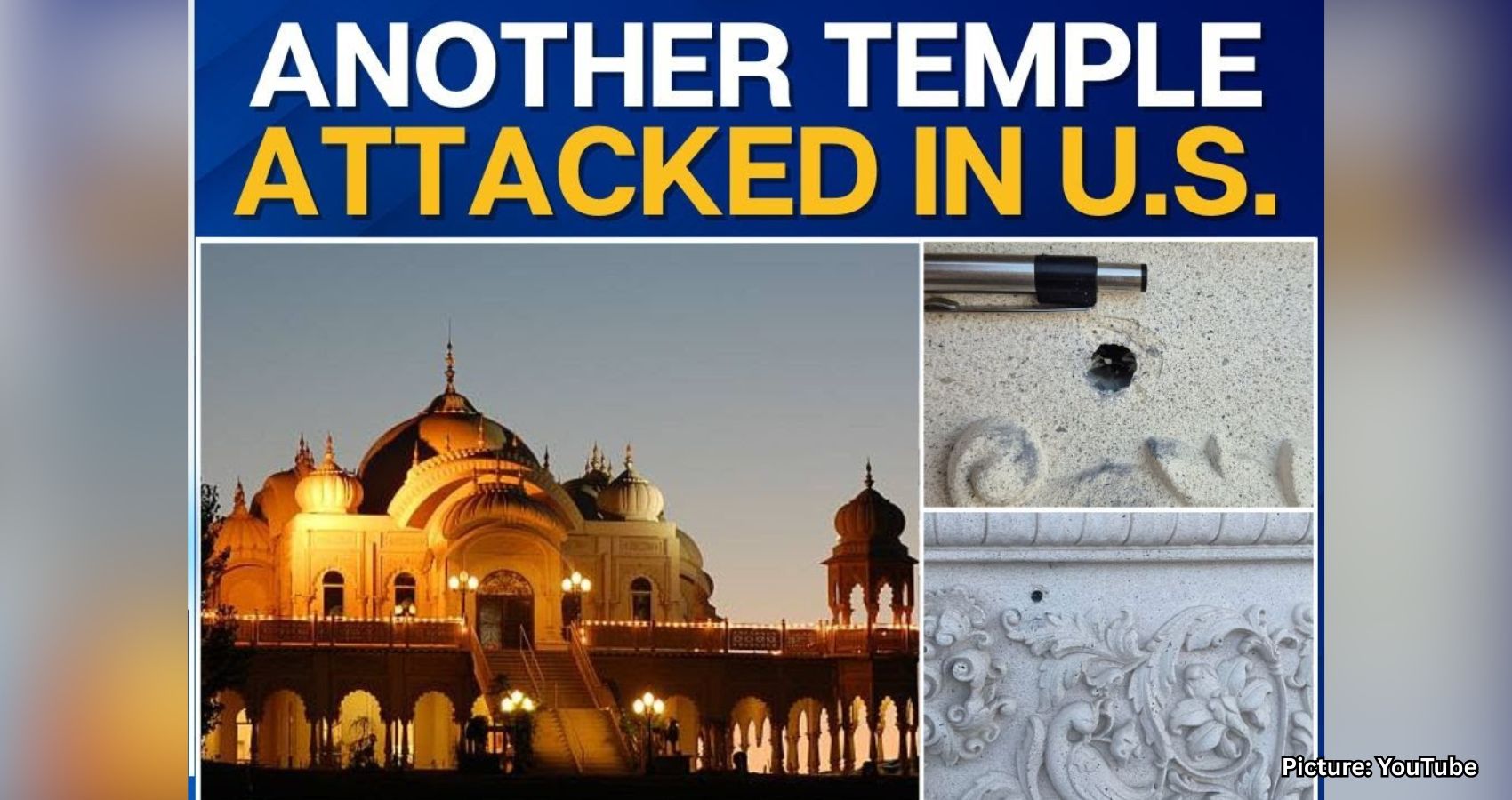

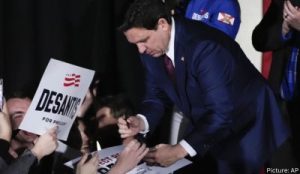
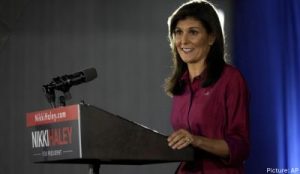

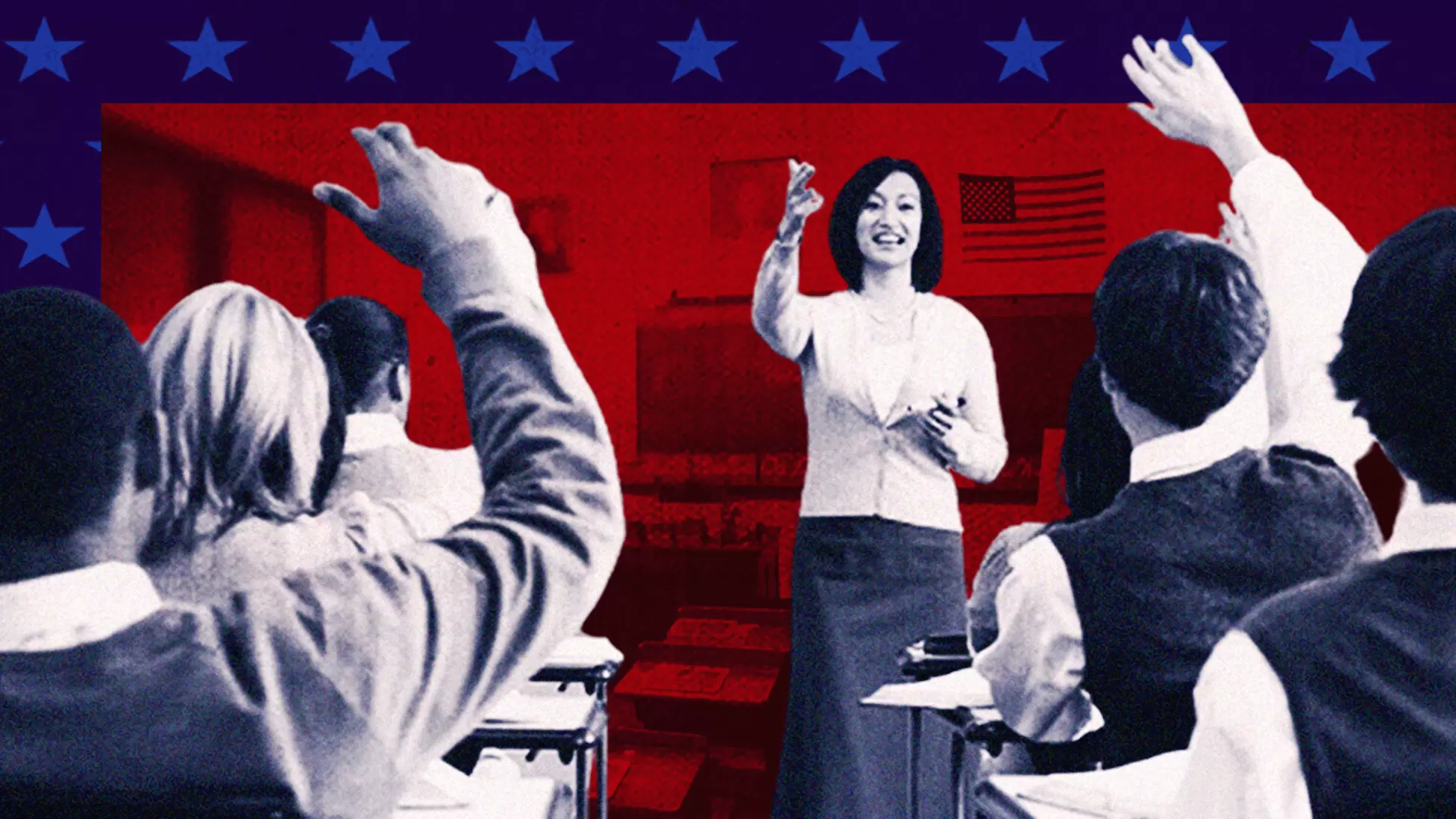
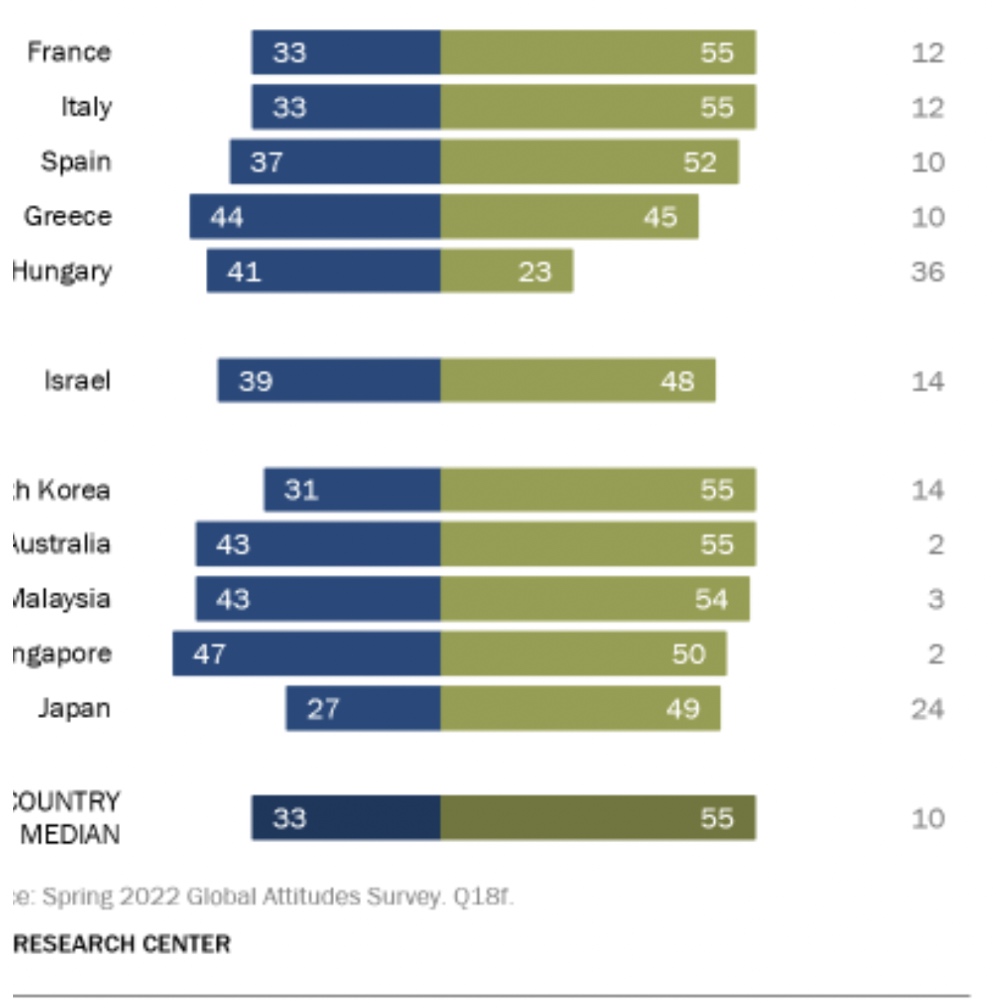 Confidence in Harris is roughly
Confidence in Harris is roughly 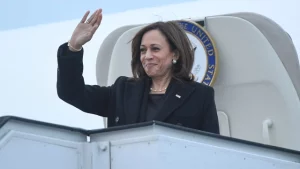 Ideology is also related to views of Harris in some places. In six countries, those who place themselves on the ideological left are significantly more likely than those on the right to have confidence in Harris. Greece is the only country where the reverse is true: 54% of Greeks on the ideological right are confident in Harris, compared with just 32% of those on the left.
Ideology is also related to views of Harris in some places. In six countries, those who place themselves on the ideological left are significantly more likely than those on the right to have confidence in Harris. Greece is the only country where the reverse is true: 54% of Greeks on the ideological right are confident in Harris, compared with just 32% of those on the left.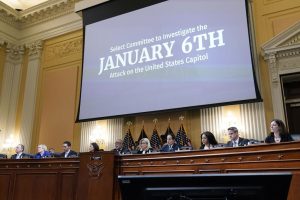 The panel documented how for some 187 minutes, from the time Trump left a rally stage sending his supporters to the Capitol to the time he ultimately appeared in the Rose Garden video that day, nothing could compel the defeated president to act. Instead, he watched the violence unfold on TV.
The panel documented how for some 187 minutes, from the time Trump left a rally stage sending his supporters to the Capitol to the time he ultimately appeared in the Rose Garden video that day, nothing could compel the defeated president to act. Instead, he watched the violence unfold on TV.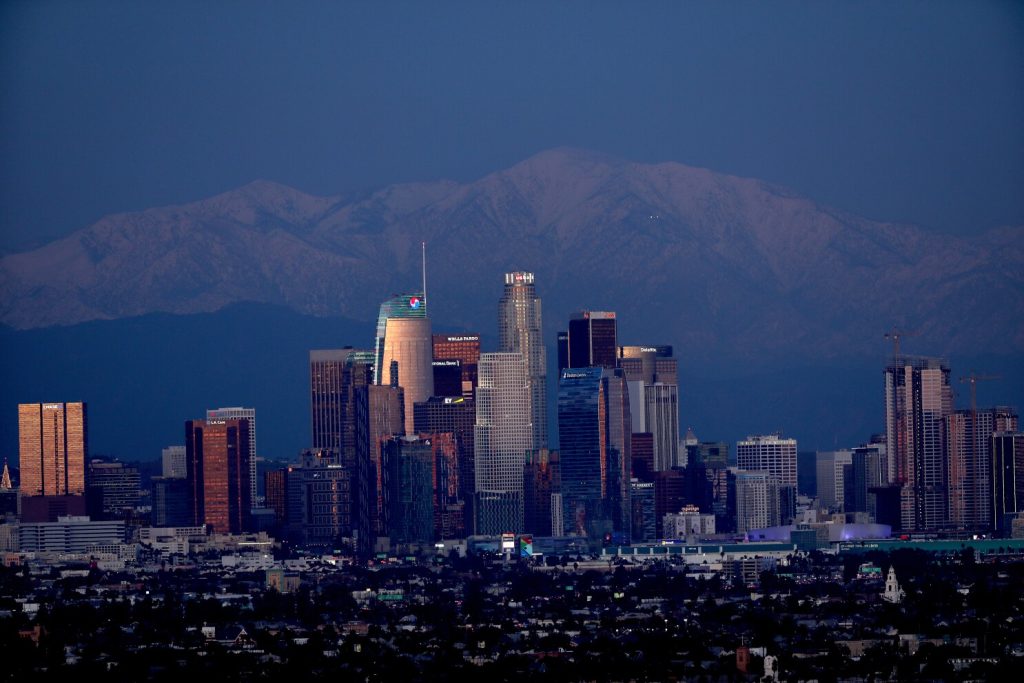 This analysis places these estimates in the context of recent decades’ trends, when America’s big cities experienced noticeable ups and downs. It then shifts the focus to the suburbs of major metropolitan areas, which—while benefitting somewhat from recent city population losses—tend to display growth slowdowns of their own.
This analysis places these estimates in the context of recent decades’ trends, when America’s big cities experienced noticeable ups and downs. It then shifts the focus to the suburbs of major metropolitan areas, which—while benefitting somewhat from recent city population losses—tend to display growth slowdowns of their own. 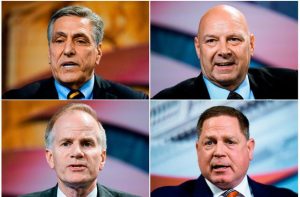 In Arkansas, which like South Dakota had an abortion ban immediately triggered by the court’s ruling, Gov. Asa Hutchinson has said he does not plan to put abortion on the agenda of next month’s special session focused on tax cuts. And in Florida, Gov. Ron DeSantis, a top potential White House contender also running for reelection, has shied away from detailing whether he will push to completely ban abortions despite a pledge to “expand pro-life protections.”
In Arkansas, which like South Dakota had an abortion ban immediately triggered by the court’s ruling, Gov. Asa Hutchinson has said he does not plan to put abortion on the agenda of next month’s special session focused on tax cuts. And in Florida, Gov. Ron DeSantis, a top potential White House contender also running for reelection, has shied away from detailing whether he will push to completely ban abortions despite a pledge to “expand pro-life protections.”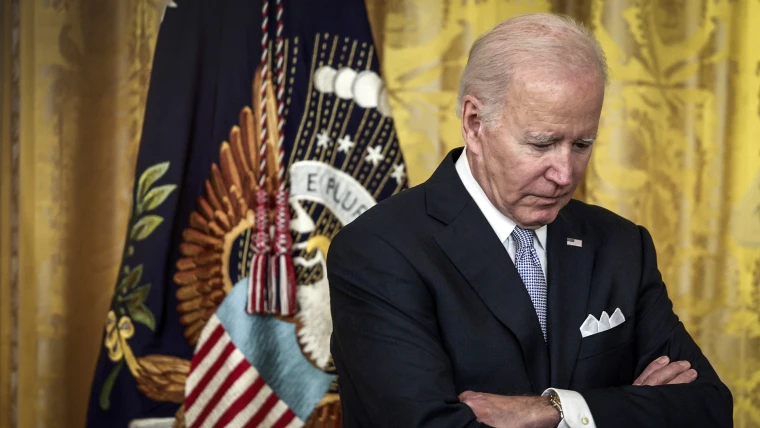 With midterm elections approaching, the poll finds no indication that Biden’s standing with the public is improving — and among some critical constituencies, it is worsening. Among Democrats, for example, Biden’s approval numbers have softened by 13 points since the spring (from 86% in a late April through early May poll to 73% now), while his numbers among independents and Republicans have held about even. Biden’s approval rating among Democrats for handling the economy is also on the decline (62% approve, down from 71% this spring). And on inflation, it is barely above water (51% of Democrats approve, 47% disapprove).
With midterm elections approaching, the poll finds no indication that Biden’s standing with the public is improving — and among some critical constituencies, it is worsening. Among Democrats, for example, Biden’s approval numbers have softened by 13 points since the spring (from 86% in a late April through early May poll to 73% now), while his numbers among independents and Republicans have held about even. Biden’s approval rating among Democrats for handling the economy is also on the decline (62% approve, down from 71% this spring). And on inflation, it is barely above water (51% of Democrats approve, 47% disapprove).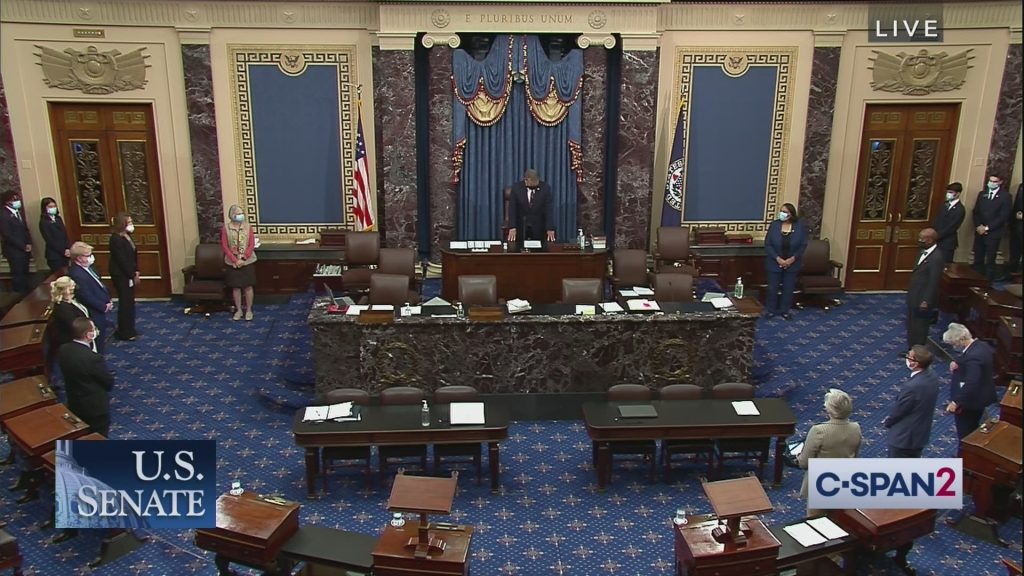 Senator Joseph Manchin III, representing the state of West Virginia in the US Senate since 2010, is a politician and businessman. A member of the Democratic Party, he was the 34th governor of West Virginia from 2005 to 2010 and the 27th secretary of state of West Virginia from 2001 to 2005. As per his website, Senator Manchin currently serves as the Chairman of the Senate Energy and Natural Resources Committee, and also serves on the Senate Committee on Appropriations, the Senate Committee on Armed Services, and the Senate Committee on Veterans’ Affairs – four critical committees that tackle the important work of addressing our nation’s energy needs, overseeing discretionary spending, standing up for our Veterans, and defending our nation.
Senator Joseph Manchin III, representing the state of West Virginia in the US Senate since 2010, is a politician and businessman. A member of the Democratic Party, he was the 34th governor of West Virginia from 2005 to 2010 and the 27th secretary of state of West Virginia from 2001 to 2005. As per his website, Senator Manchin currently serves as the Chairman of the Senate Energy and Natural Resources Committee, and also serves on the Senate Committee on Appropriations, the Senate Committee on Armed Services, and the Senate Committee on Veterans’ Affairs – four critical committees that tackle the important work of addressing our nation’s energy needs, overseeing discretionary spending, standing up for our Veterans, and defending our nation.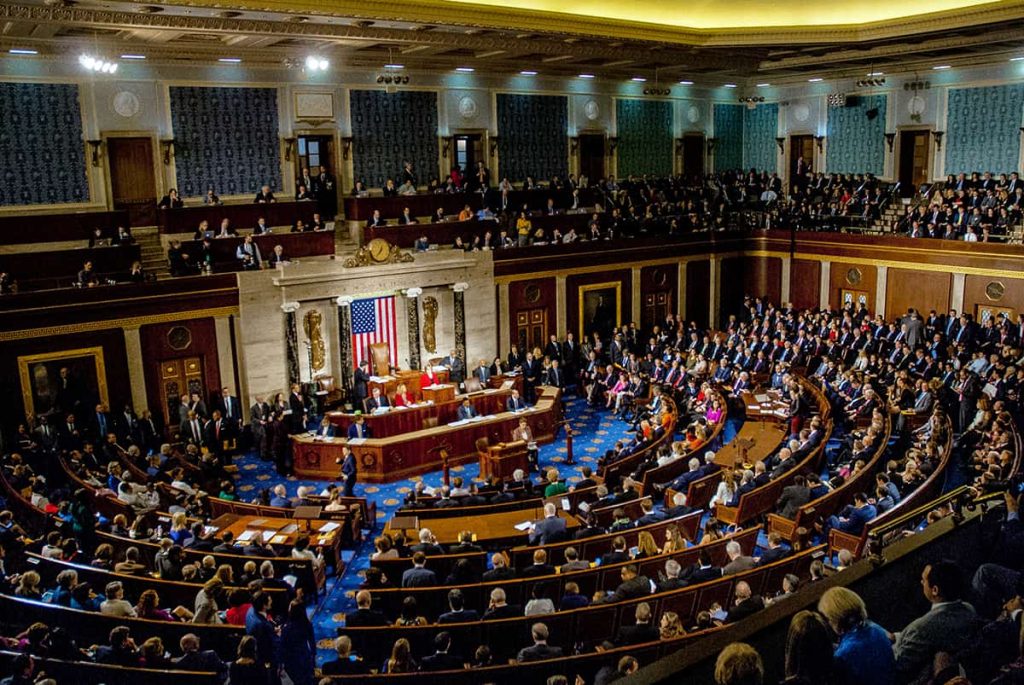 Sam Runyon, a spokesperson for Manchin, said her boss is glad that Democrats have agreed on a prescription drug proposal that they could pass with a simple-majority vote under special budget rules. “Sen. Manchin has long advocated for proposals that would lower prescription drug costs for seniors and his support for this proposal has never been in question. He’s glad that all 50 Democrats agree,” she said.
Sam Runyon, a spokesperson for Manchin, said her boss is glad that Democrats have agreed on a prescription drug proposal that they could pass with a simple-majority vote under special budget rules. “Sen. Manchin has long advocated for proposals that would lower prescription drug costs for seniors and his support for this proposal has never been in question. He’s glad that all 50 Democrats agree,” she said. 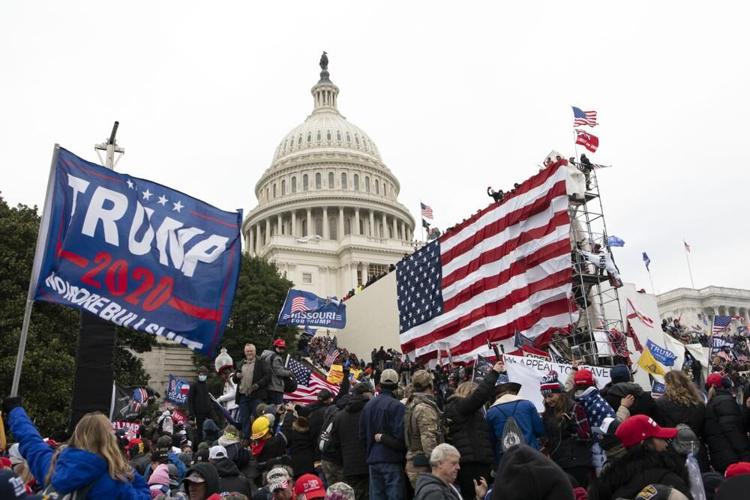 “We will lay out the body of evidence that we have that talks about how the president’s tweet on the wee hours of December 19th of ‘Be there, be wild,’ was a siren call to these folks,” said one panel member, Rep. Stephanie Murphy, D-Fla., over the weekend on “Meet the Press.” In fact, Trump tweeted, “Be there, will be wild!”
“We will lay out the body of evidence that we have that talks about how the president’s tweet on the wee hours of December 19th of ‘Be there, be wild,’ was a siren call to these folks,” said one panel member, Rep. Stephanie Murphy, D-Fla., over the weekend on “Meet the Press.” In fact, Trump tweeted, “Be there, will be wild!” Two factors contribute potently to this assault on the lives of citizens. One, practically anyone over the age of 18 can bear arms in America, even military grade assault rifles, in public. Two, there are enough depressed and mentally deranged citizens in the US who will use the guns to cool their rage. So, we have almost week after week chilling reports of some mass shooting or other in a mall or school or any other crowded place. The USA has become no doubt, a crazy ‘never never land’ where a former President recently organised an armed attack on the Capitol. Could you believe your eyes as they witnessed the violent and shocking visuals on our TV screens with security men running for cover like hunted-down rats? Has killing become a national obsession in the US?
Two factors contribute potently to this assault on the lives of citizens. One, practically anyone over the age of 18 can bear arms in America, even military grade assault rifles, in public. Two, there are enough depressed and mentally deranged citizens in the US who will use the guns to cool their rage. So, we have almost week after week chilling reports of some mass shooting or other in a mall or school or any other crowded place. The USA has become no doubt, a crazy ‘never never land’ where a former President recently organised an armed attack on the Capitol. Could you believe your eyes as they witnessed the violent and shocking visuals on our TV screens with security men running for cover like hunted-down rats? Has killing become a national obsession in the US? 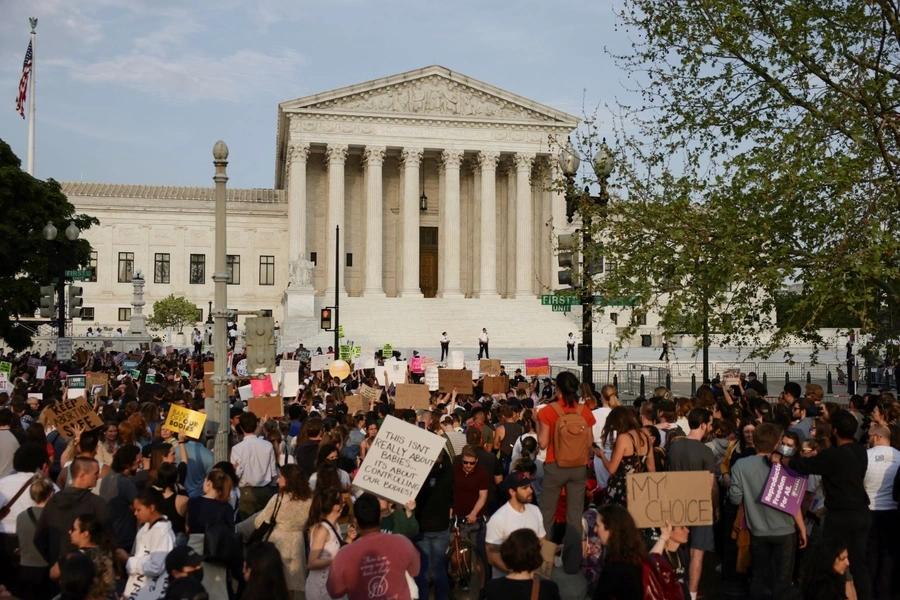 About eight-in-ten Democrats and Democratic-leaning independents (82%) disapprove of the court’s decision, including nearly two-thirds (66%) who strongly disapprove. Most Republicans and Republican leaners (70%) approve of the court’s ruling; 48% strongly approve.
About eight-in-ten Democrats and Democratic-leaning independents (82%) disapprove of the court’s decision, including nearly two-thirds (66%) who strongly disapprove. Most Republicans and Republican leaners (70%) approve of the court’s ruling; 48% strongly approve.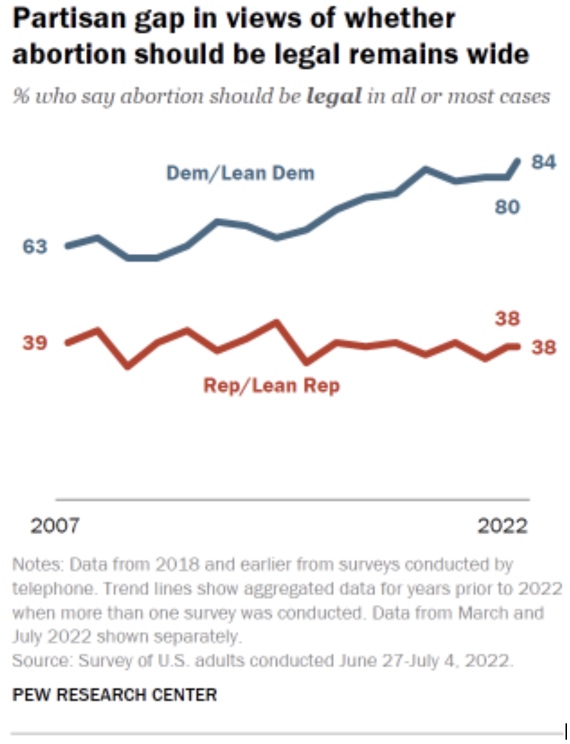 The partisan divide in abortion opinions remains wide. In the new survey, 84% of Democrats say abortion should be legal in all or most cases, compared with 38% of Republicans.
The partisan divide in abortion opinions remains wide. In the new survey, 84% of Democrats say abortion should be legal in all or most cases, compared with 38% of Republicans.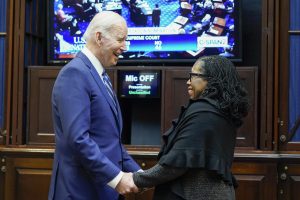 In April, she was
In April, she was  The change in interpretation may have been a change to the question of whether abortion constitutes a right guided by the U.S. Constitution. This question can be translated into the question of the relationship between basic human rights and abortion.
The change in interpretation may have been a change to the question of whether abortion constitutes a right guided by the U.S. Constitution. This question can be translated into the question of the relationship between basic human rights and abortion.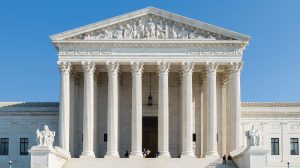 Before a historic series of rulings it was clear the Supreme Court, in its first full term with six conservative justices, was going to move to the right. It just wasn’t clear how far it would go or how fast.
Before a historic series of rulings it was clear the Supreme Court, in its first full term with six conservative justices, was going to move to the right. It just wasn’t clear how far it would go or how fast. 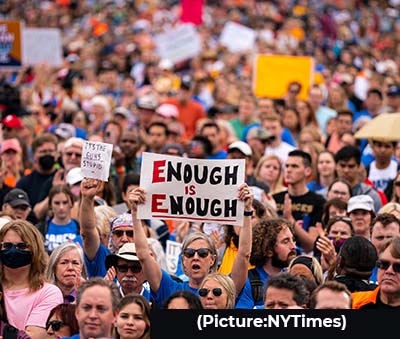 The agreement has the support of at least 20 senators, including the support of 10 Republican senators, who worked closely over the past several weeks to find the areas of common ground that could pass the closely divided Senate. The agreement is significant given how divided lawmakers have been over the gun issue, but the actual legislative text is not yet written.
The agreement has the support of at least 20 senators, including the support of 10 Republican senators, who worked closely over the past several weeks to find the areas of common ground that could pass the closely divided Senate. The agreement is significant given how divided lawmakers have been over the gun issue, but the actual legislative text is not yet written.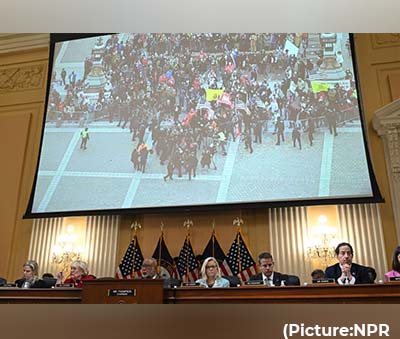 Instead, his lawyer gave a statement on his behalf and Mr Stepien’s previous private testimony was publicly played by the Democratic-led US House of Representatives select committee.
Instead, his lawyer gave a statement on his behalf and Mr Stepien’s previous private testimony was publicly played by the Democratic-led US House of Representatives select committee. In retrospect, the “
In retrospect, the “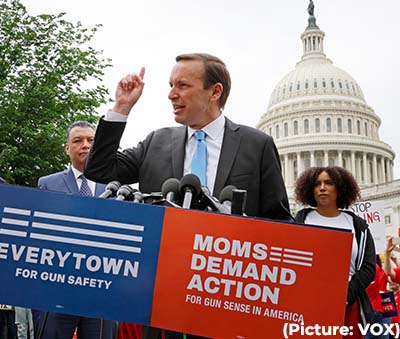 “Once again, we see lives lost and people injured in yet another horrendous, brazen and despicable act of gun violence,” Philadelphia Mayor Jim Kenney said in a statement on Sunday. In Chattanooga, Tenn., police responded early Sunday to a shooting near a nightclub. Three people were killed and 14 others were injured, according to police chief Celeste Murphy.
“Once again, we see lives lost and people injured in yet another horrendous, brazen and despicable act of gun violence,” Philadelphia Mayor Jim Kenney said in a statement on Sunday. In Chattanooga, Tenn., police responded early Sunday to a shooting near a nightclub. Three people were killed and 14 others were injured, according to police chief Celeste Murphy.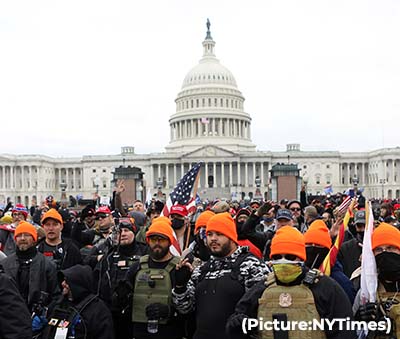 Proud Boy leader Enrique Tarrio wasn’t on the Capitol grounds during the insurrection, but prosecutors say he helped coordinate the violent effort to disrupt the electoral count that day. As the violence unfolded, Tarrio allegedly posted “Proud of my boys and my country” on social media.
Proud Boy leader Enrique Tarrio wasn’t on the Capitol grounds during the insurrection, but prosecutors say he helped coordinate the violent effort to disrupt the electoral count that day. As the violence unfolded, Tarrio allegedly posted “Proud of my boys and my country” on social media.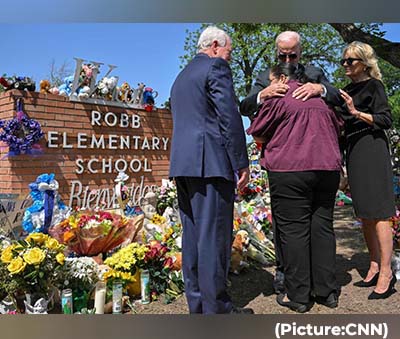 But there was only so much he could do as a president, he said. Major changes would need to be authorized by Congress, where a bipartisan group of lawmakers
But there was only so much he could do as a president, he said. Major changes would need to be authorized by Congress, where a bipartisan group of lawmakers 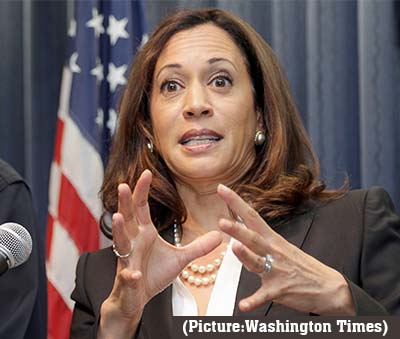 In her pre-recorded speech played on May 18, Harris recalled her mother’s work in cancer research and how she and her sister were taught to “Dream with Ambition,” by their mother.
In her pre-recorded speech played on May 18, Harris recalled her mother’s work in cancer research and how she and her sister were taught to “Dream with Ambition,” by their mother.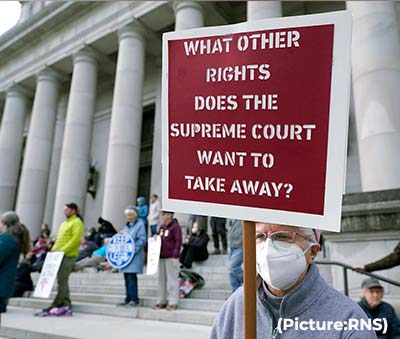 Shortly after the leak, the team surveyed potential voters again — 300 in all — to see how the news had affected candidate preference. Even before the leak, abortion was an important issue to most voters. The polls showed that abortion had, on average, a 30% weight in respondents’ candidate preference.
Shortly after the leak, the team surveyed potential voters again — 300 in all — to see how the news had affected candidate preference. Even before the leak, abortion was an important issue to most voters. The polls showed that abortion had, on average, a 30% weight in respondents’ candidate preference.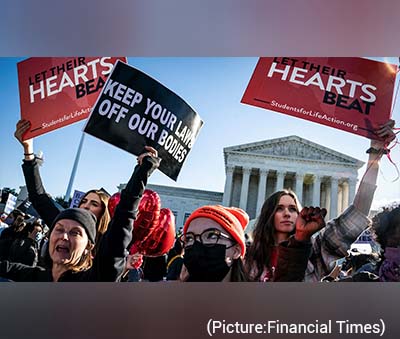 If the nation is divided on one of the most important cases that has been debated in the top Court, the justices who occupy the highest court are even more divided on the case and its implications for the millions of women who are impacted by the court that has once again proved to be a political organization, based on the ideologies of the Justices rather than the true spirit of the Constitution.
If the nation is divided on one of the most important cases that has been debated in the top Court, the justices who occupy the highest court are even more divided on the case and its implications for the millions of women who are impacted by the court that has once again proved to be a political organization, based on the ideologies of the Justices rather than the true spirit of the Constitution.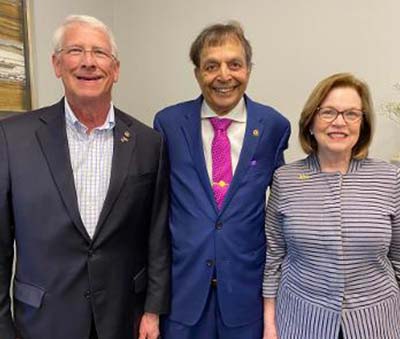 Dr. Shivangi is of the opinion that “It is apt time India should think alternative suppliers source. What can be a better source than US? We have a great opportunity here as our Senior Senator from Mississippi has been elected as a Ranking member of the US Armed Service Committee of the US Senate. With his assistance and good offices, especially after 2+2 summit, I hope and look forward to such increased collaboration with the successful Indo pacific QUAD treaty.
Dr. Shivangi is of the opinion that “It is apt time India should think alternative suppliers source. What can be a better source than US? We have a great opportunity here as our Senior Senator from Mississippi has been elected as a Ranking member of the US Armed Service Committee of the US Senate. With his assistance and good offices, especially after 2+2 summit, I hope and look forward to such increased collaboration with the successful Indo pacific QUAD treaty.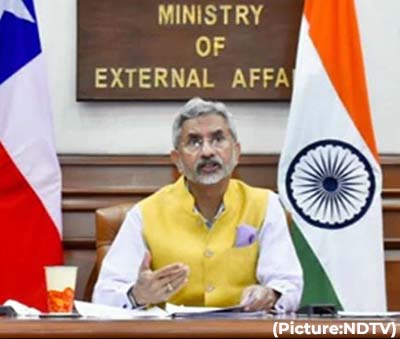 This reporter had asked if India was concerned over the growing diplomatic, military and economic ties between China and Russia. And in light of that concern, is India going to reduce its reliance on Russia economically and militarily?
This reporter had asked if India was concerned over the growing diplomatic, military and economic ties between China and Russia. And in light of that concern, is India going to reduce its reliance on Russia economically and militarily?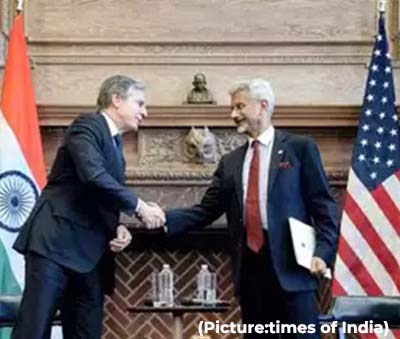 Near the end of the trip, Thurman met with Mahatma Gandhi. They talked, the books record, for about three hours, covering a wide range of issues: segregation, faith, nonviolent resistance. The conversation and the trip made a lasting impression on Thurman. So when he came back to Howard, he developed his interpretation of nonviolence – not as a political tactic, but as a spiritual lifestyle. He shared his views with sermons, speeches, and eventually what came to be an incredibly influential book, Jesus and the Disinherited.
Near the end of the trip, Thurman met with Mahatma Gandhi. They talked, the books record, for about three hours, covering a wide range of issues: segregation, faith, nonviolent resistance. The conversation and the trip made a lasting impression on Thurman. So when he came back to Howard, he developed his interpretation of nonviolence – not as a political tactic, but as a spiritual lifestyle. He shared his views with sermons, speeches, and eventually what came to be an incredibly influential book, Jesus and the Disinherited.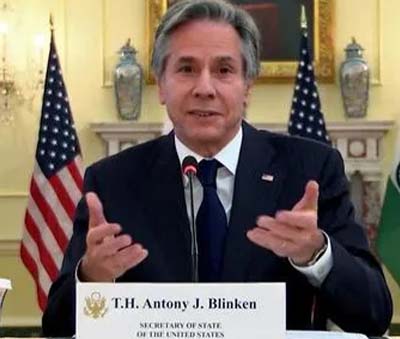 “What does Modi need to do to India’s Muslim population before we will stop considering them a partner in peace?” Omar, who belongs to President Joe Biden’s Democratic Party, said last week.
“What does Modi need to do to India’s Muslim population before we will stop considering them a partner in peace?” Omar, who belongs to President Joe Biden’s Democratic Party, said last week.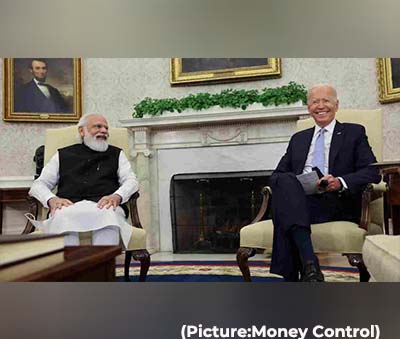 Biden told Modi during an hour-long video call Monday that the U.S. is ready to help India diversify its sources of energy, according to White House press secretary Jen Psaki. “The president also made clear that he doesn’t believe it’s in India’s interest to accelerate or increase imports of Russian energy or other commodities,” Psaki said.
Biden told Modi during an hour-long video call Monday that the U.S. is ready to help India diversify its sources of energy, according to White House press secretary Jen Psaki. “The president also made clear that he doesn’t believe it’s in India’s interest to accelerate or increase imports of Russian energy or other commodities,” Psaki said.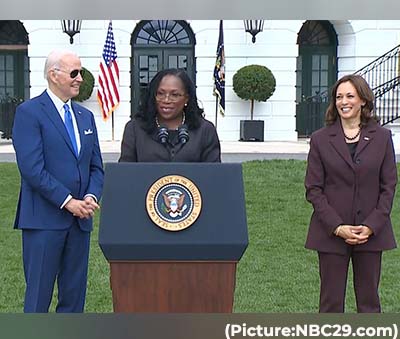 Biden administration from requiring large employers to have a workforce that is vaccinated against COVID-19 or be masked and tested; and left in place redrawn Alabama congressional districts that a lower court with two Trump appointees found shortchanged Black voters in violation of federal law.
Biden administration from requiring large employers to have a workforce that is vaccinated against COVID-19 or be masked and tested; and left in place redrawn Alabama congressional districts that a lower court with two Trump appointees found shortchanged Black voters in violation of federal law.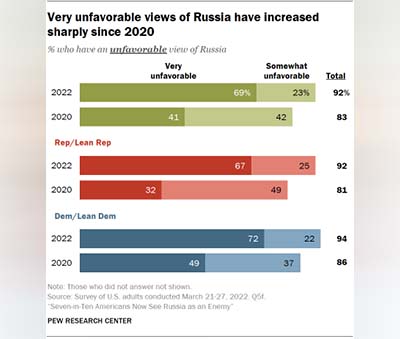 While negative sentiment toward Russia has increased substantially among both Democrats and Republicans since 2020, Republicans’ views have changed more drastically. Around a third of Republicans and Republican leaners had a very unfavorable view of Russia in 2020, compared with 67% who now hold this view – a 35 percentage point increase. In the same period, the share of Democrats with a very negative view of Russia increased by 23 points. A small partisan gap in views of Russia remains, but Republicans and Democrats are not as divided on Russia as they once were.
While negative sentiment toward Russia has increased substantially among both Democrats and Republicans since 2020, Republicans’ views have changed more drastically. Around a third of Republicans and Republican leaners had a very unfavorable view of Russia in 2020, compared with 67% who now hold this view – a 35 percentage point increase. In the same period, the share of Democrats with a very negative view of Russia increased by 23 points. A small partisan gap in views of Russia remains, but Republicans and Democrats are not as divided on Russia as they once were. Americans of all ages tend to have favorable opinions of NATO overall, but those ages 65 and older are more likely to hold a favorable view of NATO than younger adults. Roughly three-quarters (73%) of older Americans have a positive opinion of the organization, compared with 64% of those ages 18 to 29. Eight-in-ten of those with a postgraduate degree express a favorable opinion of NATO – significantly more than the share with a bachelor’s degree (73%), some college (64%) or a high school degree or less (59%).
Americans of all ages tend to have favorable opinions of NATO overall, but those ages 65 and older are more likely to hold a favorable view of NATO than younger adults. Roughly three-quarters (73%) of older Americans have a positive opinion of the organization, compared with 64% of those ages 18 to 29. Eight-in-ten of those with a postgraduate degree express a favorable opinion of NATO – significantly more than the share with a bachelor’s degree (73%), some college (64%) or a high school degree or less (59%).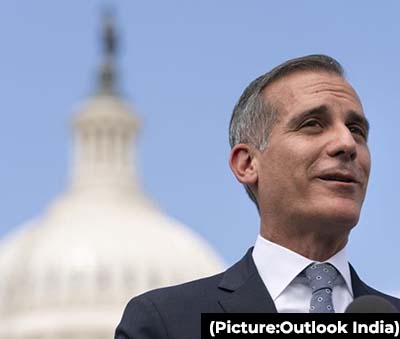 Politico reported last week that “As the US Senate considered making Garcetti emissary to the world’s biggest democracy, the consternation was initially confined to the GOP: Republican Iowa Sens. Joni Ernst and Chuck Grassley both placed holds on Garcetti’s nomination last month over allegations that Garcetti knew of sexual misconduct in his office, when he was the mayor of Los Angeles.
Politico reported last week that “As the US Senate considered making Garcetti emissary to the world’s biggest democracy, the consternation was initially confined to the GOP: Republican Iowa Sens. Joni Ernst and Chuck Grassley both placed holds on Garcetti’s nomination last month over allegations that Garcetti knew of sexual misconduct in his office, when he was the mayor of Los Angeles.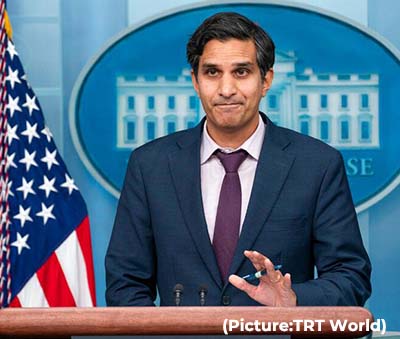 There will be consequences for countries looking to circumvent the US sanctions against Russia, the US warned even as Russian foreign minister Sergey Lavrov arrived in India last week on March 31st. Visiting US deputy NSA Daleep Singh, who was in India and is leading US efforts to sanction Russia, didn’t specify the consequences but said these were part of private discussions and the US would not like to see any country attempting to take advantage of the current situation.
There will be consequences for countries looking to circumvent the US sanctions against Russia, the US warned even as Russian foreign minister Sergey Lavrov arrived in India last week on March 31st. Visiting US deputy NSA Daleep Singh, who was in India and is leading US efforts to sanction Russia, didn’t specify the consequences but said these were part of private discussions and the US would not like to see any country attempting to take advantage of the current situation.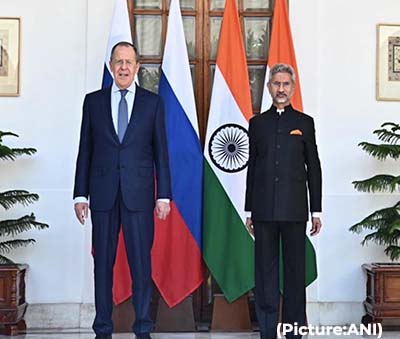 “India, as you are aware, has always been in favor of resolving differences and disputes through dialogue and diplomacy. In our meeting today, we will have an opportunity to discuss contemporary issues and concerns in some detail. I look forward to our discussions,” the External Affairs Minister said.
“India, as you are aware, has always been in favor of resolving differences and disputes through dialogue and diplomacy. In our meeting today, we will have an opportunity to discuss contemporary issues and concerns in some detail. I look forward to our discussions,” the External Affairs Minister said.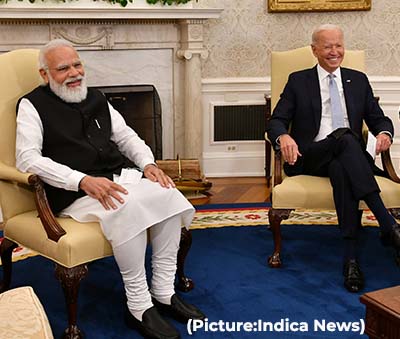 US state department spokesperson Ned Price said notwithstanding India’s historic relationship with Russia, which came together at a time when the US was not prepared to have such kind of a relationship with India, now the US is a partner of India.
US state department spokesperson Ned Price said notwithstanding India’s historic relationship with Russia, which came together at a time when the US was not prepared to have such kind of a relationship with India, now the US is a partner of India.  One such resolution was backed by 141 countries, though a Russian diplomat contended that with China and India both abstaining, the critics represented less than half of the global population.
One such resolution was backed by 141 countries, though a Russian diplomat contended that with China and India both abstaining, the critics represented less than half of the global population.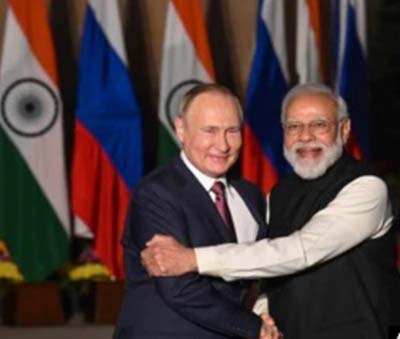 What triggered it?
What triggered it?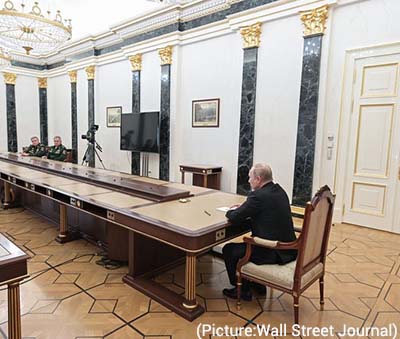 “The unthinkable might start to become thinkable,”
“The unthinkable might start to become thinkable,” 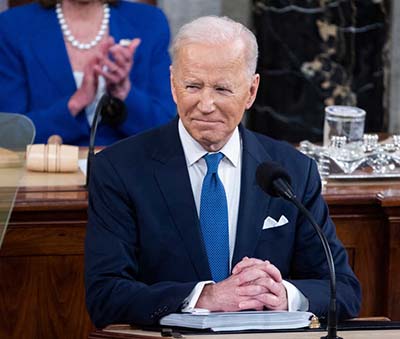 But it took only a few months for the perception of the Soviet Union as a friendly nation to change. As Cold War historian Martin Walker writes:
But it took only a few months for the perception of the Soviet Union as a friendly nation to change. As Cold War historian Martin Walker writes: The resolution proposed by the US and Albania sought to declare that Russia has committed acts of aggression against Ukraine and the situation is a breach of international peace and security. It had also demanded that Russia immediately cease its use of force against Ukraine and completely withdraw its military forces from within Ukraine’s internationally recognized borders.
The resolution proposed by the US and Albania sought to declare that Russia has committed acts of aggression against Ukraine and the situation is a breach of international peace and security. It had also demanded that Russia immediately cease its use of force against Ukraine and completely withdraw its military forces from within Ukraine’s internationally recognized borders.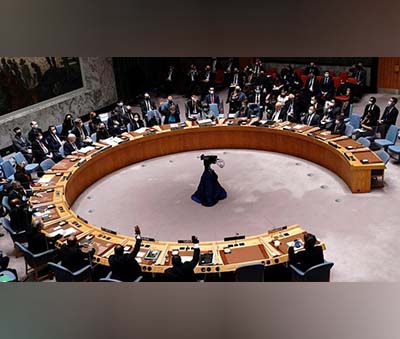 India was courted by both the US and Russia given the symbolic nature of the vote and the West’s desire to isolate the US. Russian President Vladimir Putin spoke to Prime Minister Narendra Modi on Thursday. And US Secretary of State Antony Blinken called External Affairs Minister S. Jaishankar to press the case for voting for the resolution.
India was courted by both the US and Russia given the symbolic nature of the vote and the West’s desire to isolate the US. Russian President Vladimir Putin spoke to Prime Minister Narendra Modi on Thursday. And US Secretary of State Antony Blinken called External Affairs Minister S. Jaishankar to press the case for voting for the resolution. U.S. President Joe Biden said on Friday he was convinced Russian President Vladimir Putin had made a decision to invade Ukraine, and though there was still room for diplomacy, he expected Russia to move on the country in the coming days. Russia has repeatedly denied preparing to invade Ukraine.
U.S. President Joe Biden said on Friday he was convinced Russian President Vladimir Putin had made a decision to invade Ukraine, and though there was still room for diplomacy, he expected Russia to move on the country in the coming days. Russia has repeatedly denied preparing to invade Ukraine. The shock to international stability could hit global markets
The shock to international stability could hit global markets Russian cyberattacks have
Russian cyberattacks have 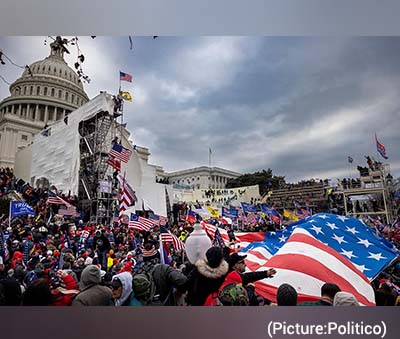 “After all, the President’s actions here do not relate to his duties of faithfully executing the laws, conducting foreign affairs, commanding the armed forces, or managing the Executive Branch,” Mehta added. “They entirely concern his efforts to remain in office for a second term. These are unofficial acts, so the separation-of-powers concerns that justify the President’s broad immunity are not present here.”
“After all, the President’s actions here do not relate to his duties of faithfully executing the laws, conducting foreign affairs, commanding the armed forces, or managing the Executive Branch,” Mehta added. “They entirely concern his efforts to remain in office for a second term. These are unofficial acts, so the separation-of-powers concerns that justify the President’s broad immunity are not present here.”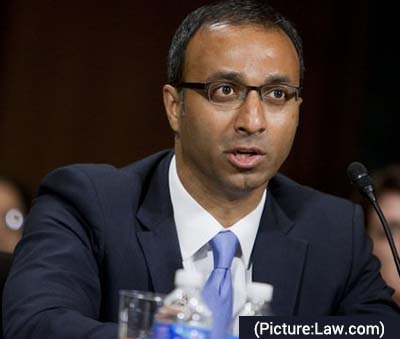 The decision, Friday, however, sets in motion a path to the judge weighing the factual allegations and evidence against Trump in the cases as well as possible civil trials months or years from now, where Trump is at the defense table.
The decision, Friday, however, sets in motion a path to the judge weighing the factual allegations and evidence against Trump in the cases as well as possible civil trials months or years from now, where Trump is at the defense table.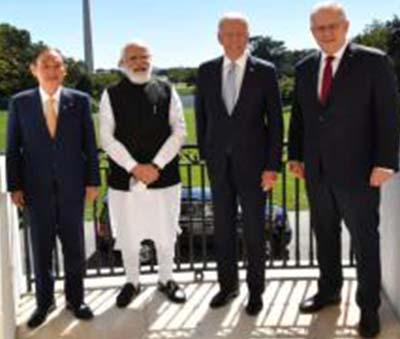 The document prepared mostly by the National Security Council and released a year after Biden assumed office sets out the plan for the Indo-Pacific, a region that his administration had said was going to be the focus of its diplomatic and strategic engagement.
The document prepared mostly by the National Security Council and released a year after Biden assumed office sets out the plan for the Indo-Pacific, a region that his administration had said was going to be the focus of its diplomatic and strategic engagement. Both lawmakers issued statements in advance of the vote. “The leaders of the Republican Party have made themselves willing hostages to a man who admits he tried to overturn a presidential election and suggests he would pardon 6 January defendants, some of whom have been charged with seditious conspiracy,” Ms Cheney said.
Both lawmakers issued statements in advance of the vote. “The leaders of the Republican Party have made themselves willing hostages to a man who admits he tried to overturn a presidential election and suggests he would pardon 6 January defendants, some of whom have been charged with seditious conspiracy,” Ms Cheney said.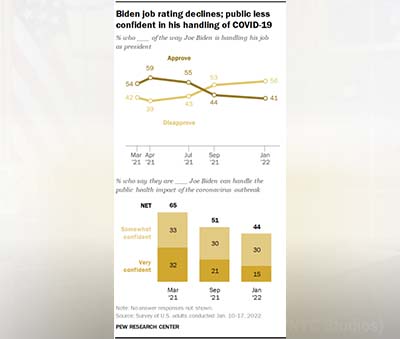
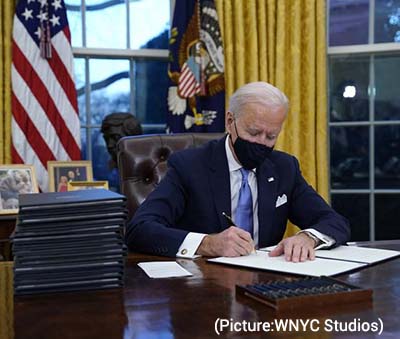 And larger shares of Americans say they agree more with the Democrats than with Republicans on several key policy areas, including policies to deal with the health impact of the coronavirus (41% agree with the Democratic Party, while 27% the Republican Party; 31% agree with neither). Significantly more Americans also say they agree with the Democratic Party than the GOP on policies of climate change (by 22 points), health care (16 points), abortion (10 points) and education (8 points). Comparable shares agree with both parties on economic, immigration and gun policy. Among eight policy areas included in the survey, there is none on which a significantly larger share agrees with the GOP than the Democrats.
And larger shares of Americans say they agree more with the Democrats than with Republicans on several key policy areas, including policies to deal with the health impact of the coronavirus (41% agree with the Democratic Party, while 27% the Republican Party; 31% agree with neither). Significantly more Americans also say they agree with the Democratic Party than the GOP on policies of climate change (by 22 points), health care (16 points), abortion (10 points) and education (8 points). Comparable shares agree with both parties on economic, immigration and gun policy. Among eight policy areas included in the survey, there is none on which a significantly larger share agrees with the GOP than the Democrats. “Our team is extremely honored to endorse Nida Allam and Kesha Ram Hinsdale for Congress. Both Nida and Kesha uphold the progressive and justice-oriented values that we at IMPACT are thrilled to support in tandem,” Makhija said.
“Our team is extremely honored to endorse Nida Allam and Kesha Ram Hinsdale for Congress. Both Nida and Kesha uphold the progressive and justice-oriented values that we at IMPACT are thrilled to support in tandem,” Makhija said. Graham, during an interview with CBS News, warned that pardoning individuals tied to the attack would be “inappropriate.”
Graham, during an interview with CBS News, warned that pardoning individuals tied to the attack would be “inappropriate.”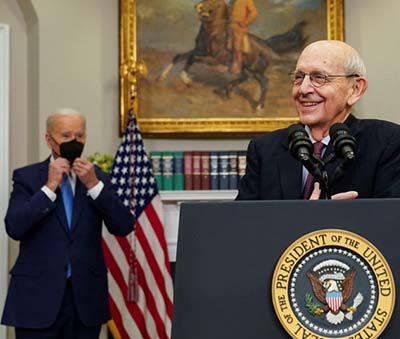 Biden announced Breyer’s retirement Thursday at a White House event, saying he planned to pick a nominee before the end of February.
Biden announced Breyer’s retirement Thursday at a White House event, saying he planned to pick a nominee before the end of February.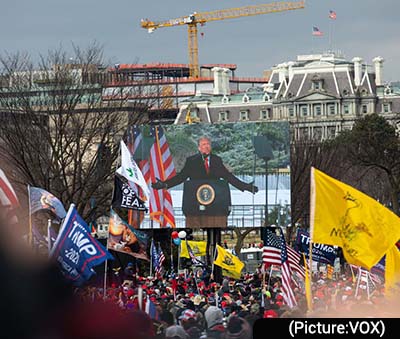 “If these radical, vicious, racist prosecutors do anything wrong or illegal, I hope we are going to have in this country the biggest protest we have ever had in Washington, D.C, in New York, in Atlanta and elsewhere,” he told the crowd.
“If these radical, vicious, racist prosecutors do anything wrong or illegal, I hope we are going to have in this country the biggest protest we have ever had in Washington, D.C, in New York, in Atlanta and elsewhere,” he told the crowd. Pentagon spokesman John Kirby said up to 8,500 U.S. service members were put on heightened alert for deployment to bolster NATO allies’ eastern defenses should Russia invade. The forces would not be sent to Ukraine, which is not a NATO member, nor take part in any combat roles, Kirby said, but rather serve as reinforcements in places like Poland or Romania to reassure U.S. allies and deter Russian aggression. If activated, the troops would be part of the
Pentagon spokesman John Kirby said up to 8,500 U.S. service members were put on heightened alert for deployment to bolster NATO allies’ eastern defenses should Russia invade. The forces would not be sent to Ukraine, which is not a NATO member, nor take part in any combat roles, Kirby said, but rather serve as reinforcements in places like Poland or Romania to reassure U.S. allies and deter Russian aggression. If activated, the troops would be part of the 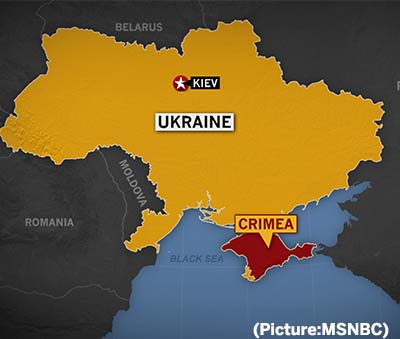 Putin denies Russia has any intention to attack Ukraine but he has made clear that he considers NATO military support for neighboring countries a growing threat. Last month, the Russian Foreign Ministry published two lengthy draft treaties that listed what Moscow wants from the U.S. and its allies. They call for an end to NATO’s eastward expansion, including a pledge that Ukraine will not be permitted to join NATO, as well as to the U.S. military’s ties with Ukraine and other former Soviet nations, all of which have been dismissed as “non-starters” by the U.S.
Putin denies Russia has any intention to attack Ukraine but he has made clear that he considers NATO military support for neighboring countries a growing threat. Last month, the Russian Foreign Ministry published two lengthy draft treaties that listed what Moscow wants from the U.S. and its allies. They call for an end to NATO’s eastward expansion, including a pledge that Ukraine will not be permitted to join NATO, as well as to the U.S. military’s ties with Ukraine and other former Soviet nations, all of which have been dismissed as “non-starters” by the U.S. Greater domestic oppression synced with the invasion of Ukraine and further augmented the widespread sense that Russia, already the world’s largest country, deserves territory far beyond its gargantuan reach. This sense of fluid borders ranges from the far-right fantasies about an Eurasian Empire from the Indian Ocean to the Atlantic, to the more common “Russo-sphere.” In Russia’s case the term “sphere of influence” doesn’t only denote something hard and defined, which can be hammered out with other “great powers” in some grand new geopolitical deal, but something that swells and swings with the pistons of suppressed resentment and emotional dynamics.
Greater domestic oppression synced with the invasion of Ukraine and further augmented the widespread sense that Russia, already the world’s largest country, deserves territory far beyond its gargantuan reach. This sense of fluid borders ranges from the far-right fantasies about an Eurasian Empire from the Indian Ocean to the Atlantic, to the more common “Russo-sphere.” In Russia’s case the term “sphere of influence” doesn’t only denote something hard and defined, which can be hammered out with other “great powers” in some grand new geopolitical deal, but something that swells and swings with the pistons of suppressed resentment and emotional dynamics.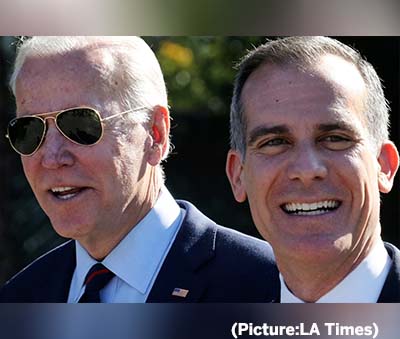 Earlier last month, US Senate Foreign Relations Committee chaired by Sen. Menendez, D-N.J., along with only a handful of Democrats and two Republicans, stressed how Washington sees India as a key partner in its effort to push back against China’s expanding power and influence.
Earlier last month, US Senate Foreign Relations Committee chaired by Sen. Menendez, D-N.J., along with only a handful of Democrats and two Republicans, stressed how Washington sees India as a key partner in its effort to push back against China’s expanding power and influence.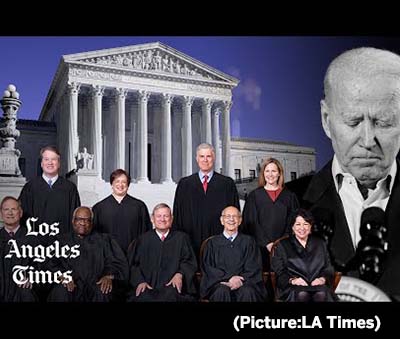 “Although Congress has indisputably given OSHA the power to regulate occupational dangers, it has not given that agency the power to regulate public health more broadly. Requiring the vaccination of 84 million Americans, selected simply because they work for employers with more than 100 employees, certainly falls in the latter category,” the unsigned opinion in the businesses case says.
“Although Congress has indisputably given OSHA the power to regulate occupational dangers, it has not given that agency the power to regulate public health more broadly. Requiring the vaccination of 84 million Americans, selected simply because they work for employers with more than 100 employees, certainly falls in the latter category,” the unsigned opinion in the businesses case says.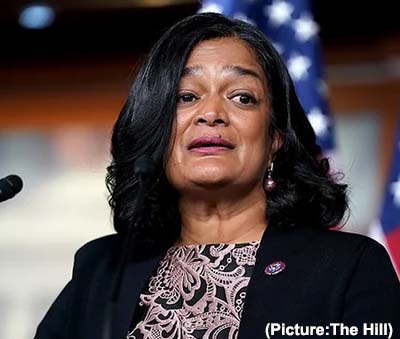 Jayapal said congressional Democrats should continue to prioritize passing a version of the Build Back Better Act. She said that a revised bill should keep as much of the legislation that the House passed in November as possible intact, and shouldn’t be narrower than the $1.75 trillion framework the White House released in October.
Jayapal said congressional Democrats should continue to prioritize passing a version of the Build Back Better Act. She said that a revised bill should keep as much of the legislation that the House passed in November as possible intact, and shouldn’t be narrower than the $1.75 trillion framework the White House released in October.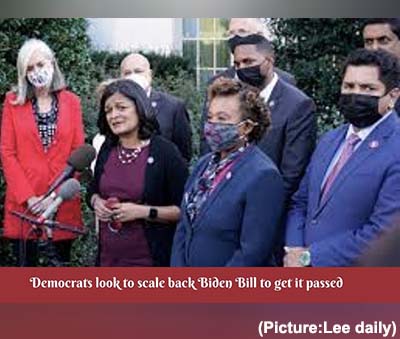 “That is the way forward here,” said Ben Ritz, director of the Center for Funding America’s Future at the Progressive Policy Institute, who has advocated for a bill with fewer items. “Most of the party is starting to come around to that,” Ritz added. Some Democrats think their party made a mistake in going too large in the first place.
“That is the way forward here,” said Ben Ritz, director of the Center for Funding America’s Future at the Progressive Policy Institute, who has advocated for a bill with fewer items. “Most of the party is starting to come around to that,” Ritz added. Some Democrats think their party made a mistake in going too large in the first place.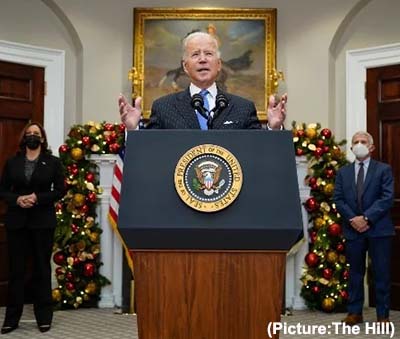 The U.S. never had a nationwide lockdown like other nations did. Even during the height of the pandemic in the spring of 2020, each governor made his or her own decisions about the level of restrictions to enact state by state.
The U.S. never had a nationwide lockdown like other nations did. Even during the height of the pandemic in the spring of 2020, each governor made his or her own decisions about the level of restrictions to enact state by state. When President Joe Biden announced his nomination of Hussain in July, the White House noted his work on countering antisemitism and defending religious minorities in countries with Muslim majorities. Hussain, who has served as a judicial clerk in the 6th U.S. Circuit Court of Appeals and as the editor of the Yale Law Journal, speaks Spanish, Arabic and Urdu. He also is a hafiz, or someone who has memorized the entire Quran in Arabic.
When President Joe Biden announced his nomination of Hussain in July, the White House noted his work on countering antisemitism and defending religious minorities in countries with Muslim majorities. Hussain, who has served as a judicial clerk in the 6th U.S. Circuit Court of Appeals and as the editor of the Yale Law Journal, speaks Spanish, Arabic and Urdu. He also is a hafiz, or someone who has memorized the entire Quran in Arabic. His point to them was that the court system should decide what the law is, and it should resist efforts like that of the Texas Legislature to get around the courts by limiting the ability of abortion providers to sue.
His point to them was that the court system should decide what the law is, and it should resist efforts like that of the Texas Legislature to get around the courts by limiting the ability of abortion providers to sue. Such a discussion has never been more vital. The systems in place today once represented a clear improvement on prior regimes—monarchies, theocracies, and other tyrannies—but it may be a mistake to call them adherents of democracy at all. The word roughly translates from its original Greek as “people’s power.” But the people writ large doesn’t hold power in these systems. Elites do. Consider that in the United States, according to a
Such a discussion has never been more vital. The systems in place today once represented a clear improvement on prior regimes—monarchies, theocracies, and other tyrannies—but it may be a mistake to call them adherents of democracy at all. The word roughly translates from its original Greek as “people’s power.” But the people writ large doesn’t hold power in these systems. Elites do. Consider that in the United States, according to a 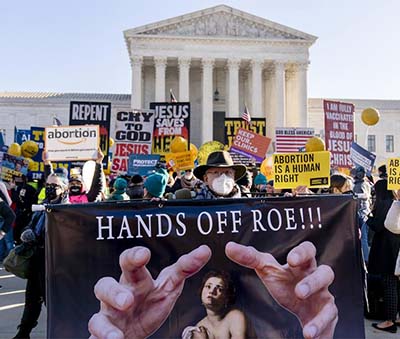 The need for Democrats to manage resources between federal and state races could create some uncomfortable conversations over the coming months.
The need for Democrats to manage resources between federal and state races could create some uncomfortable conversations over the coming months.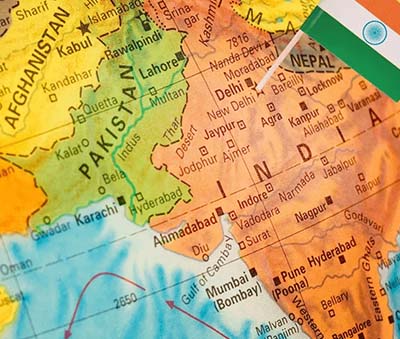 The country performs best in the future resources measure, where it finishes behind only the US and China. However, lost growth potential for Asia’s third largest economy due largely to the impact of the coronavirus pandemic has led to a diminished economic forecast for 2030, Lowy Institute said.
The country performs best in the future resources measure, where it finishes behind only the US and China. However, lost growth potential for Asia’s third largest economy due largely to the impact of the coronavirus pandemic has led to a diminished economic forecast for 2030, Lowy Institute said.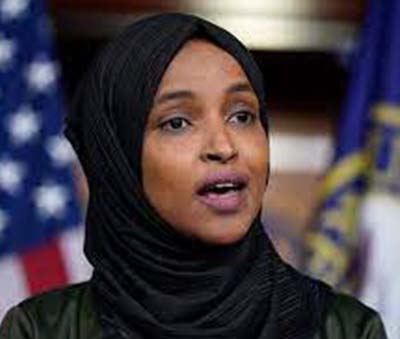 Oz’s faith is perhaps little known to the millions of viewers of his show but his role as one of the most prominent Muslims in American life has not gone unnoticed. He is one of roughly 40 Americans included in the 2022 edition of the World’s 500 Most Influential Muslims, an annual list put out by the Royal Islamic Strategic Studies Centre, a Jordanian think tank
Oz’s faith is perhaps little known to the millions of viewers of his show but his role as one of the most prominent Muslims in American life has not gone unnoticed. He is one of roughly 40 Americans included in the 2022 edition of the World’s 500 Most Influential Muslims, an annual list put out by the Royal Islamic Strategic Studies Centre, a Jordanian think tank